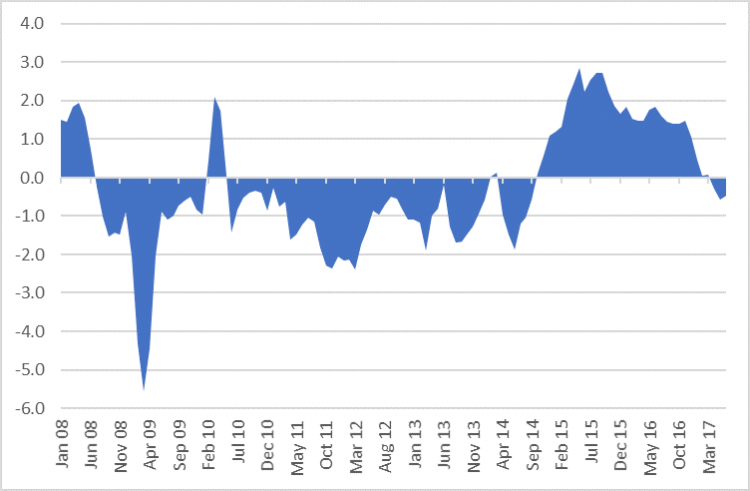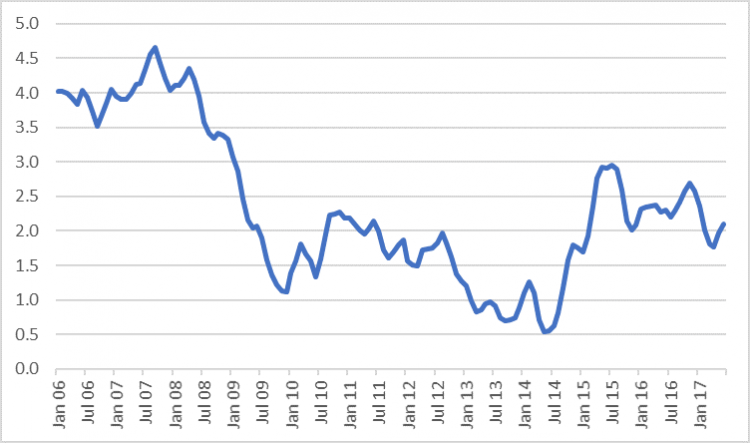Rising employment shouldn’t distract from the living standards crisis

The latest figures show employment has reached a new record of 75.1% and the unemployment rate is just 4.4%. But workers are feeling the pinch with wages rising slower than the cost of living for the fourth month in a row.
Real earnings (percentage year on year) 3-month average (2008-2017)

The growth in real wages we saw in 2015 and 2016 was short-lived. It was largely due to exceptionally low inflation rates. Before the crisis, the norm for the growth in nominal wages was usually around 4%.
Nominal wage growth increased from 2.0% to 2.1% in the latest set of data. But one set of data is not a trend. The pattern since the recession has been lower nominal wage growth.
Nominal wage growth 2006-2017

In our previous blogs we explored possible causes for the lack of wage pressure, including lower productivity, slack in the labour market, and that the situation has been exacerbated by the government’s fiscal policies.
However, the current living standards squeeze is caused by the combination of weak nominal wage growth and increasing inflation. After the vote to leave the EU, the reduction in the value of the pound leading to more expensive imports has contributed to inflation (CPIH) rising to 2.6 per cent. A year ago, it was only 0.8 per cent.
And the squeeze isn’t expected to ease. The Bank of England expects inflation to increase to around 3% in the Autumn, and for wage growth to average 2% in 2017.
The governor of the Bank of England views the UK’s weak productivity as key to explaining poor wage growth. But he also believes Brexit uncertainties have discouraged firms from awarding pay rises.
The pressure on household incomes has intensified with no immediate signs of abating. And for those working in the public sector, the imposition of the 1% pay cap has made life even more difficult.
Stay Updated
Want to hear about our latest news and blogs?
Sign up now to get it straight to your inbox
